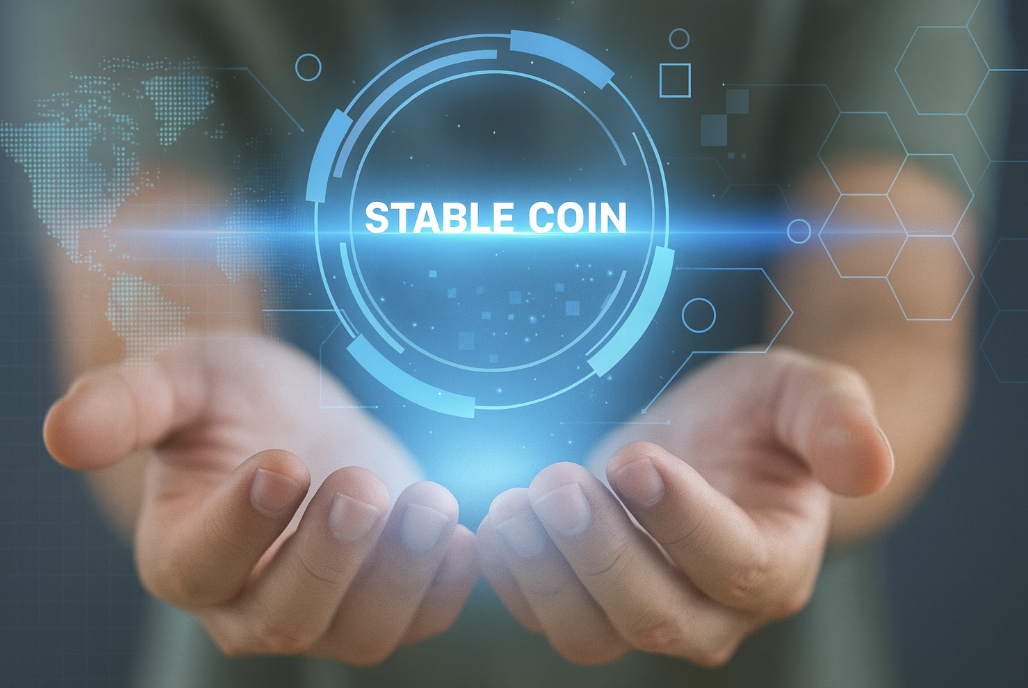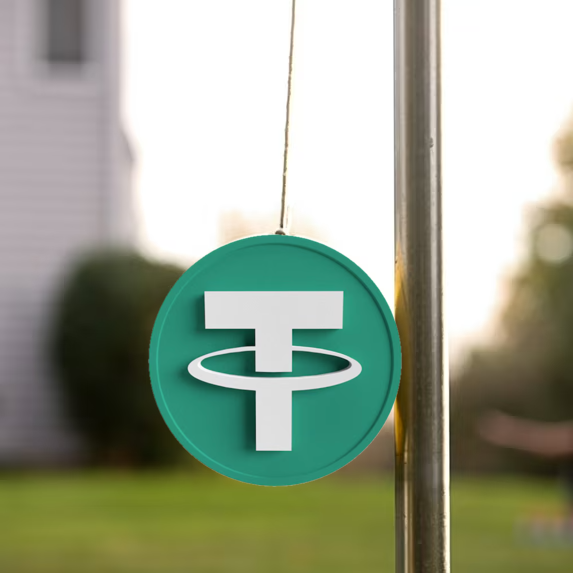What Are Stablecoins and How Do They Work?
Cryptocurrency is known for its volatility. Prices of Bitcoin (BTC) and Ethereum (ETH) can fluctuate dramatically in a single day, which has always been both a source of opportunity and a challenge for investors. Amid that volatility, stablecoins emerged as a unique class of digital assets designed to bring stability to the crypto ecosystem, offering the flexibility of cryptocurrency with the predictability of traditional currency.
If you buy or sell crypto in Canada, understanding what stablecoins are and how they work is uber important. Depending on if you’re using them as a bridge between exchanges, protecting profits from BTC and ETH volatility, or transferring funds instantly, stablecoins play a major role in modern crypto investing.
What Is a Stablecoin?
A stablecoin is a type of cryptocurrency designed to maintain a stable value by pegging its price to a reserve asset, usually a fiat currency like the U.S. dollar (USD) or the Canadian dollar (CAD). Unlike Bitcoin or Ether, which can rise or fall by several percent in hours, a stablecoin like USDC (USD Coin) or USDT (Tether) aims to stay close to $1 USD at all times.
The idea is simple: while Bitcoin and Ethereum are great for long-term growth and decentralization, they aren’t always ideal for making payments or holding short term balances due to their volatility. Stablecoins bridge that gap by giving users a crypto asset that behaves more like cash.
How Stablecoins Maintain Their Value
1. Fiat-Backed Stablecoins
These are the most common and trusted stablecoins. Each coin is backed by reserves of fiat currency; for example, every USDC is backed by an equivalent amount of U.S. dollars held in reserve by regulated institutions.
Popular fiat-backed stablecoins include:
- USDC (USD Coin)
- USDT (Tether)
- BUSD (Binance USD)
When you buy a fiat-backed stablecoin, the issuing company adds one unit to circulation and holds a matching amount of fiat currency in its accounts. When you redeem it, the company removes the stablecoin from circulation and releases the underlying fiat.
2. Crypto-Backed Stablecoins
These stablecoins use other cryptocurrencies as collateral instead of fiat money. A good example is DAI, which is backed by Ethereum and other digital assets through the MakerDAO protocol.
Because crypto prices are volatile, crypto-backed stablecoins are typically over-collateralized, meaning that $1 worth of DAI might be backed by $1.50 or more worth of Ethereum. This ensures stability even if the value of the collateral falls.
3. Algorithmic Stablecoins
Algorithmic stablecoins use supply and demand mechanisms, rather than reserves, to keep their price stable. Smart contracts automatically expand or contract the token supply to maintain the peg.
With that however, these are generally considered riskier. The collapse of TerraUSD (UST) in 2022 highlighted how algorithmic stablecoins can fail during extreme market conditions.
Why Stablecoins Matter in the Canadian Crypto Ecosystem
Stablecoins have become a critical part of the digital asset landscape. They act as a bridge between traditional finance and decentralized finance (DeFi), allowing users to move money quickly and efficiently without depending on banks or fluctuating crypto prices.
Common uses for Canadians who buy and sell Bitcoin and Ethereum:
1. Reducing Volatility
When crypto markets swing, traders often move their holdings into stablecoins to protect profits. For example, if you’ve bought Bitcoin at a lower price and want to lock in gains without fully exiting the market, converting BTC to USDC allows you to preserve your value while staying within the crypto ecosystem.
2. Instant Settlements and Transfers
Stablecoins allow for faster and cheaper transfers across borders. Instead of waiting for traditional bank wires to clear, users can send stablecoins instantly, often with minimal fees. This has made them increasingly popular for peer-to-peer payments, remittances, and cross-border transactions.
3. DeFi and Yield Opportunities
Stablecoins play a major role in DeFi platforms, where users can earn interest, lend, or provide liquidity. Because of their stability, they’re ideal for these applications, offering ways to generate passive income without exposure to high volatility.
4. Buying and Selling Bitcoin or Ethereum
Stablecoins are also a convenient on-ramp and off-ramp when you buy Bitcoin or Ethereum in Canada. Many exchanges, wallet providers and trading platforms pair BTC and ETH with stablecoins like USDC, allowing for seamless trades without relying on traditional fiat conversions. This flexibility lets crypto investors move in and out of positions quickly, without waiting for bank transfers or market delays.
If you’re planning to sell Bitcoin in Canada, one simple strategy is to first convert your BTC to a stablecoin like USDC or DAI when market conditions are favourable. From there, you can sell your stablecoins for Canadian dollars (CAD) at your convenience, locking in profits while staying within the Canadian crypto ecosystem.
You can also go the other way. Once you hold stablecoins, you can easily convert them into Bitcoin or Ethereum using the swap or trade feature in your preferred wallet or exchange account. Platforms like MetaMask, Trust Wallet, and Ledger Live make it simple to swap between crypto assets directly from your wallet. After converting your stablecoins into BTC or ETH, you can send your crypto to MyBTC.ca/sell to cash out instantly for CAD and withdraw funds directly to your Canadian bank account.
Similarly, if you’re looking to buy crypto in Canada, MyBTC.ca makes it easy to fund your account via Interac e-Transfer, bank wire, or credit card to purchase Bitcoin and Ethereum securely. Once you’ve received your BTC or ETH, you can swap them for stablecoins within your wallet or exchange account to protect gains or maintain liquidity for your next trade.
This integration of buying, selling, and swapping makes MyBTC.ca an essential part of a Canadian crypto trader’s day-to-day lifestyle; a fast, reliable, and compliant way to manage digital assets while maintaining control and flexibility.
The Benefits of Using Stablecoins
- Price Stability: Maintain predictable value compared to volatile assets like BTC and ETH.
- Accessibility: Easier to move between exchanges, wallets, and DeFi platforms.
- Speed: Settle transactions within minutes or even seconds, unlike traditional banking systems.
- Low Fees: Especially compared to international transfers or traditional remittance services.
- Transparency: Many stablecoins (like USDC) are regularly audited by third-party firms to confirm their reserves.
Stablecoins effectively combine the innovation of blockchain with the reliability of fiat currency; a balance that appeals to both crypto newcomers and experienced traders.
How to Buy Stablecoins in Canada
MyBTC.ca allows Canadians to buy and sell Bitcoin and Ethereum instantly using Interac e-Transfer, bank wire, Flexepin vouchers, or credit card. While MyBTC.ca specializes in BTC and ETH, users can also convert these assets into stablecoins on their personal wallets or trading platforms for portfolio management or hedging. Think of owning BTC or ETH as buying tickets to use at the fair to swap and trade for things, in this example, stablecoins.
For example, after you buy Bitcoin or Ethereum, you could send those funds to a DeFi wallet like MetaMask or Ledger Live, then trade them for stablecoins like USDC to preserve value during market corrections.
Stablecoins and the Future of Crypto
Stablecoins have evolved from simple payment tools into a cornerstone of the digital economy. They enable global payments, DeFi applications, and act as a safe haven within volatile markets.
In the long term, stablecoins may even form the foundation for central bank digital currencies (CBDCs), government-backed digital money that leverages blockchain for speed and transparency.
As Canada continues to modernize its financial system and regulatory frameworks, stablecoins will likely play an increasingly important role in connecting traditional finance with digital assets like Bitcoin and Ethereum.
Final Words
For Canadians who buy, sell, and hold crypto, stablecoins offer flexibility, liquidity, and stability in an otherwise volatile market. They allow you to move between Bitcoin, Ethereum, and cash-like assets with ease, without ever leaving the blockchain ecosystem.
Whether you’re looking to hedge against price swings, cash out profits, or transfer funds globally, stablecoins can be an essential part of your crypto toolkit.
Start your crypto adventure today, buy Bitcoin and Ethereum in Canada with MyBTC.ca, and take advantage of the secure, fast, and transparent experience trusted by Canadians coast to coast.











